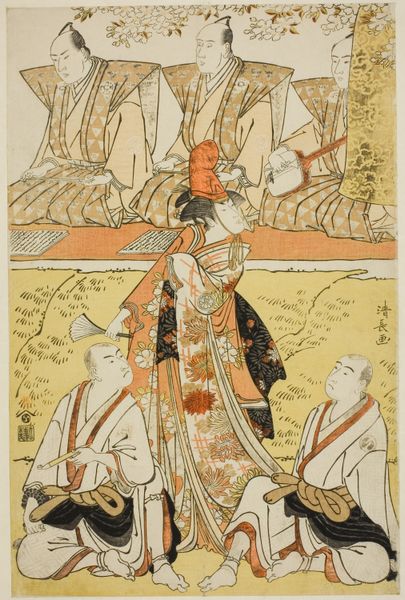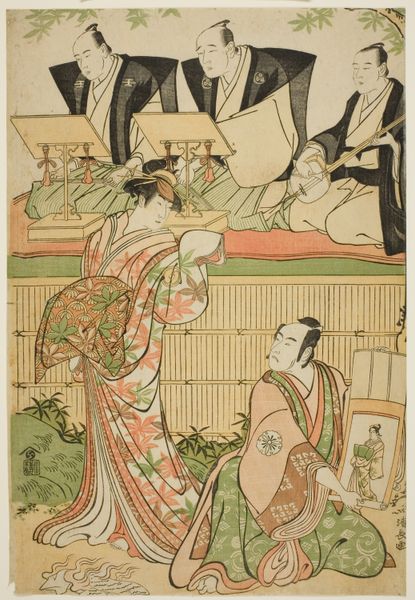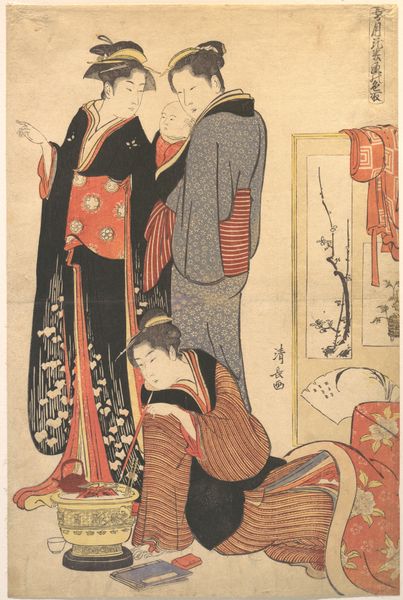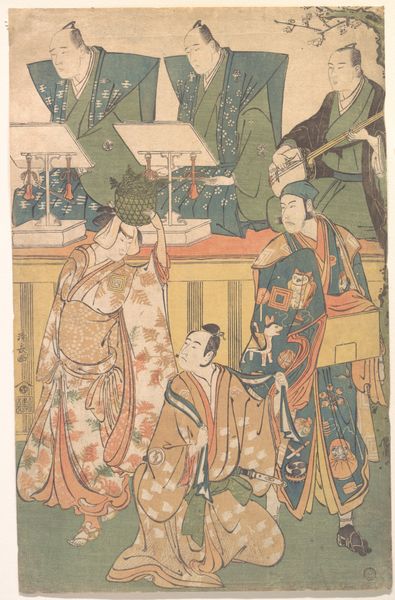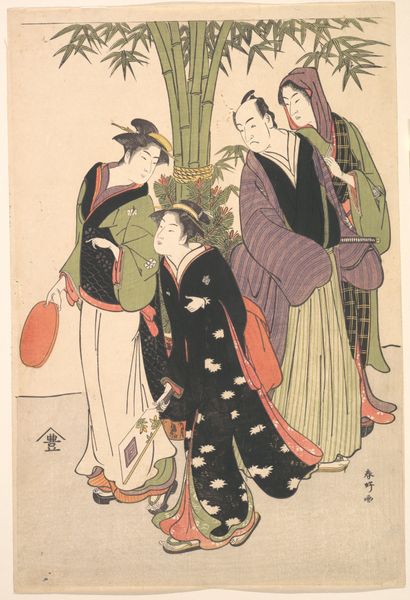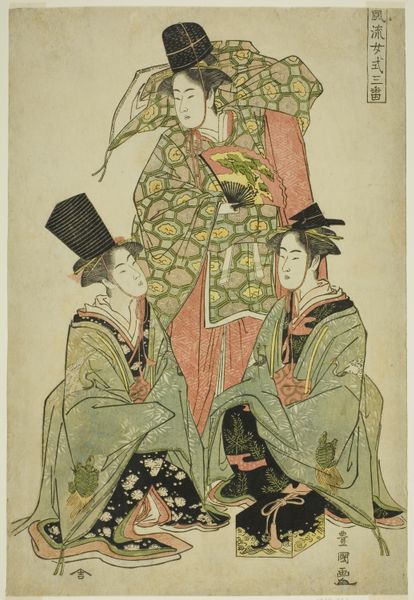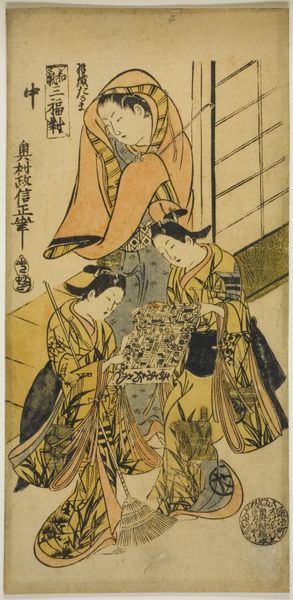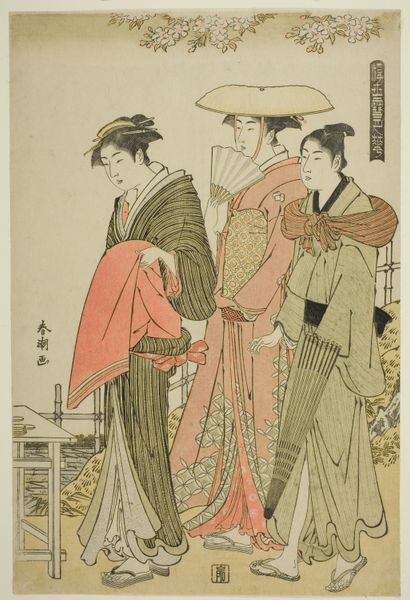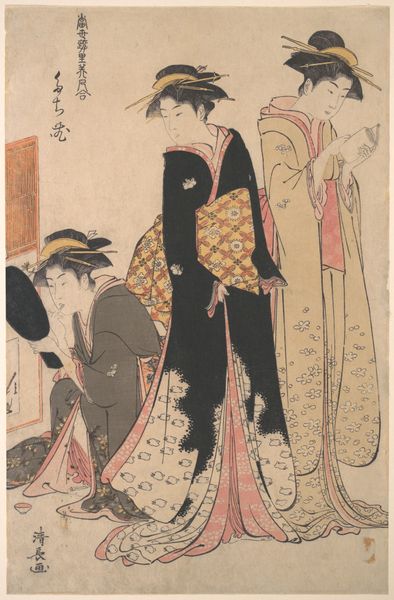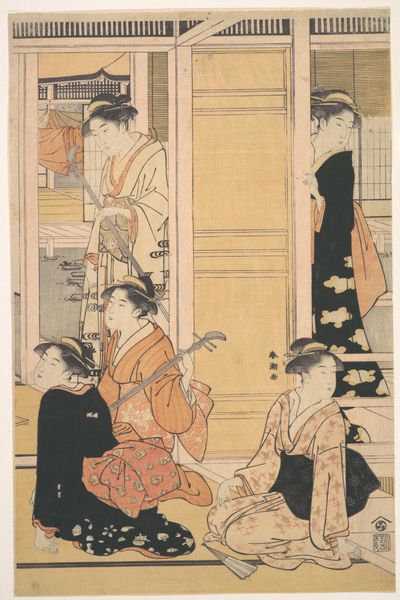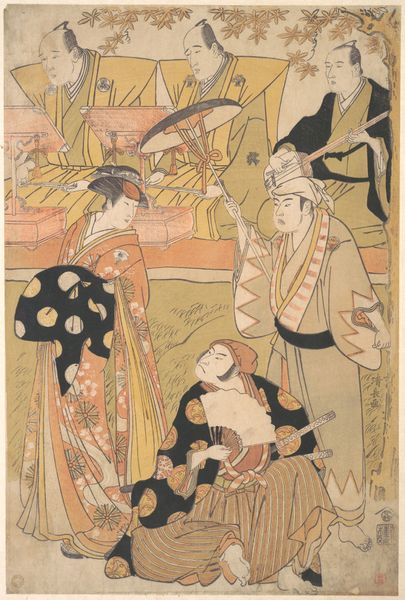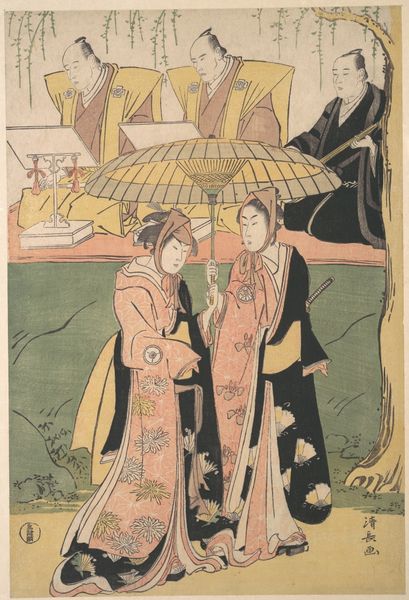
The Actors Nakayama Kojuro VI (Nakamura Nakazo I) as Chidori, Sawamura Sojuro III as Shigemori, and Ichikawa Yaozo III as Yoshibei, in the shosa "Fukyoku Edo Geisha," performed at the Nakamura Theater in the eleventh month, 1785 1785
0:00
0:00
#
portrait
#
narrative-art
# print
#
asian-art
#
ukiyo-e
#
genre-painting
Dimensions: 38.4 × 24.9 cm
Copyright: Public Domain
Curator: Here we have a Japanese woodblock print by Torii Kiyonaga, dating to 1785. It depicts actors in the shosa "Fukyoku Edo Geisha" at the Nakamura Theater. Editor: My first impression is of elegant constraint; the lines are delicate, the colors muted, and there’s a compartmentalization of the figures that lends it an almost architectural stillness. Curator: Precisely. The composition divides the space into two distinct registers, each holding figures in poised arrangements. Kiyonaga has captured a moment in time with incredible clarity. It’s also essential to note that ukiyo-e prints like this were collaborative endeavors. The artist designs the image, but specialized carvers and printers bring it to life. Each artisan brings unique skills, contributing to the overall effect. Editor: Indeed, we shouldn't overlook the significance of the production process in defining its aesthetic. The materiality itself speaks to a whole system of labor. We can practically feel the pressure of the woodblocks and the patient layering of color. Think about the guilds that trained the artisans. Those precise lines wouldn’t have been possible without careful tooling and generations of collective know-how. It reveals the intersection between artistic expression and standardized work in early modern Japan. Curator: Absolutely. Looking closer, consider how Kiyonaga manipulates line weight to create depth. The costumes, for instance, with their intricate patterns and folds, are rendered with subtle variations that enhance their dimensionality. Semiotically, these costumes are potent signifiers of status and character within the narrative. We see those elements through his art. Editor: And that’s where I find it truly compelling. That theatricality is entirely embedded in a web of societal conditions and practical demands. The making of it intertwines completely with what's being represented. In doing so, the print straddles social commentary, performance record and the tangible outcomes of workshop labour. Curator: A fascinating intersection indeed. It allows us to appreciate the interplay between artistic intention and material conditions in shaping the artwork’s meaning and reception. Editor: Definitely. There is such complexity in even the simplest line in its material creation and social context. Curator: I concur. It reveals itself to be quite a nuanced production once you peel away at its layers.
Comments
No comments
Be the first to comment and join the conversation on the ultimate creative platform.
